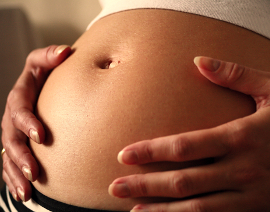- 905.829.0724
- info@yourhealthwellnesscentre.com

After giving birth, the core is weakened. Core muscles include the diaphragm, pelvic floor, and the multifidus and transversus adbominis (two muscles that work to stabilize your lower back and pelvis). Massage therapy can help with the muscle strain that happens during delivery, as well as balance out compensations in your posture that happen afterwards. Treatments focus on your back, neck, hips, and hamstrings. You can start abdominal massage two to four weeks after vaginal birth and four to six weeks after a caesarean birth.
For caesarean births, we can also begin working on a scar as soon as the wound is closed. Gentle techniques, such as lymphatic drainage, are first used to soften the tissue. As the scar matures, myofascial techniques are used to decrease the constrictions and frictions are used to decrease scar tissue and adhesions. Vitamin E or castor oil can also be used on scar to soften it.
If necessary, we can also refer you to a pelvic floor physiotherapist to assess and strengthen your pelvic floor muscles. The most common types of pelvic floor are issues are urinary or fecal incontinence, pelvic girdle pain, pelvic organ prolapse, Diastasis Rectus Abdominis, and painful intercourse. Pelvic floor dysfunction can cause low back and pelvic girdle pain.
If you have pelvic floor dysfunction, massage can focus on compensating areas. The treatment includes working on low back, hip, inner thigh, hip flexors, and abdominal muscles.